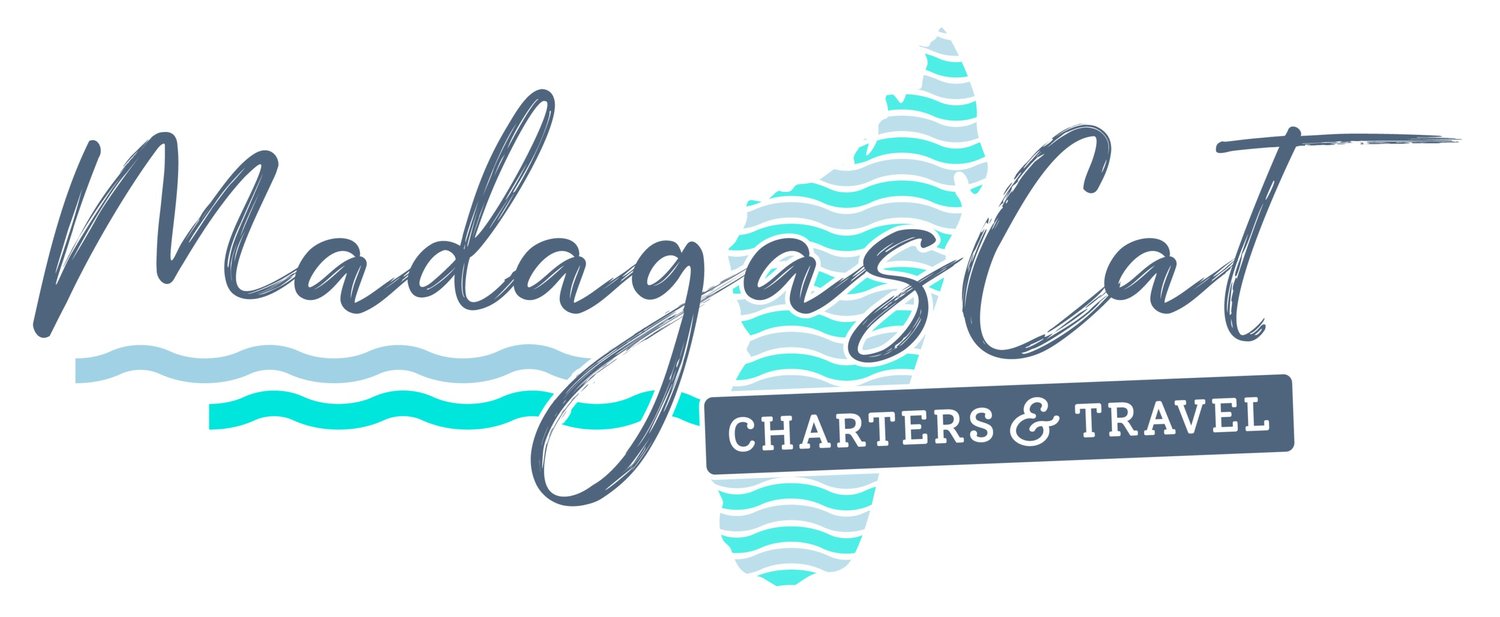FAQ - Need to know with madagascat
Documents? Do you need a visa?
All visitors need a tourist visa which costs around €35 per person and is issued on arrival at the airport. Cash is required for the visas. Passports must have more than six months validity and two empty pages.
Medical:
Madagascar is a malarial area so it is recommended you discuss this with your GP. However, Nosy Be rarely has cases of the disease. There are no other innoculations required. But always travel with a basic First Aid Kit.
Covid:
All visitors will be required to have been fully vaccinated; have a negative PCR test no older than 72 hours prior to arrival and, if applicable, another negative PCR test prior to returning to your country of origin.
Getting Around:
Car Hire is not easy and the roads appalling! For going further afield it is wise to book a vehicle with a local driver or use one of the two domestic airlines to save time reaching your destination. Most of the lodges have transport and will arrange local excursions for you. All our tours include an air-conditioned vehicle with a driver.
Shopping:
The country has amazing shopping if you are looking for local souvenirs. Raffia (the only Malagasy word that has made it to the English language) basket work; beware of buying wood products without a proper receipt to show at customs. Vanilla used to be cheap but with the drought the price has become very expensive. Green Peppercorns and delicious Sakai (chilli). The handmade tablecloths are unique to Madagascar. The crafts that look like turtle shell are actually made from Zebu (cow) horn so quite conservation friendly. Bargaining is expected – but don’t push too hard; the locals work very hard for their living.
What should we avoid?
Not much really! But if you don’t enjoy seeing old men with young women avoid Ambataloaka in Nosy Be. This is where prostitution is rife. There are a few areas in Tana that tourists wouldn’t go to anyway.
Handy hint to save money or get a bargain.
Draw the local Ariary from an ATM (VISA credit card mainly) to be sure of the best prices anywhere. In Nosy Be you will have to go into Hellville to do this. There are two ATM’s at Tana Airport. Credit Cards are accepted but not everywhere and often attract a high surcharge. Watch out for the money changers! Know your rate of exchange before getting into any deal! If language is a barrier the most common way of getting a price is either for the vendor to write it down (‘E scree vay’ – pronounced) or on the calculator.
Don’t leave home without:
Your sense of humour; sense of adventure, insect spray and sun block!
Safety and health for travellers.
As with anywhere in the world avoid blatantly showing off expensive items. Crime is rare but still happens. Do not walk on any coral and drink only bottled water.
Don’t leave the island without experiencing:
A lemur on the shoulder; snorkelling with turtles; supporting some form of local trade.
In case of emergency:
It is essential to take out a good Travel Insurance as soon as you have confirmed your booking.. Always make sure you have ONE phone working on roaming; have our number handy, your hotel’s number and the SA Consulate: Tel: + 261 20 224 3350.
Currency
The local currency is MGA or ‘Ariary’.
What is the Rate of Exchange?
Is Madagascar Expensive?
Lodges can be expensive or cheap – depending on how you travel. Sadly with the ZAR/Euro rate of exchange Madagascar tends to be a bit on the expensive side for South African travellers BUT it is a unique destination.
Best time to visit Madagascar?
January, February and early March are known as Cyclone Season – this is not to say there will be a cyclone but many of the hotels and boats close down for this period. The weather during this time is VERY hot, VERY humid and VERY wet.
The very best time is really from early April through to the end of November. December is still fine but getting a bit humid!
For water clarity June to end September. Fishing is best in May and November – although rewarding all year round.
What food do they serve in Madagascar?
Malagasy Cuisine is strangely bland with not many elaborate local dishes. Rice is their staple and the Malagasy people consume more rice per capita than any other nation. Anything that accompanies the rice is unimportant. However, there is a very strong French influence throughout all the lodges and restaurants and people are perhaps more surprised at the high standard of food than anything else. Seafood is always on offer with fresh prawns, calamari and crab being the most common. Superb Malagasy chocolate and bananas are to dessert as rice is to the main and this does not vary too much! Fresh tropical Fruit of the Day is sweet, juicy and delicious.
Any talk about cuisine would not be complete without mentioning Rhum Arrange. This dessert rum comes in more variations than fruit juices. Anything that can be found is soaked in huge glass jars of rum for a number of months before being ready to serve. Pineapple, mango, ginger, vanilla, chocolate, litchi, banana, cinnamon and orange! Don’t overdo it! It is strong stuff!
